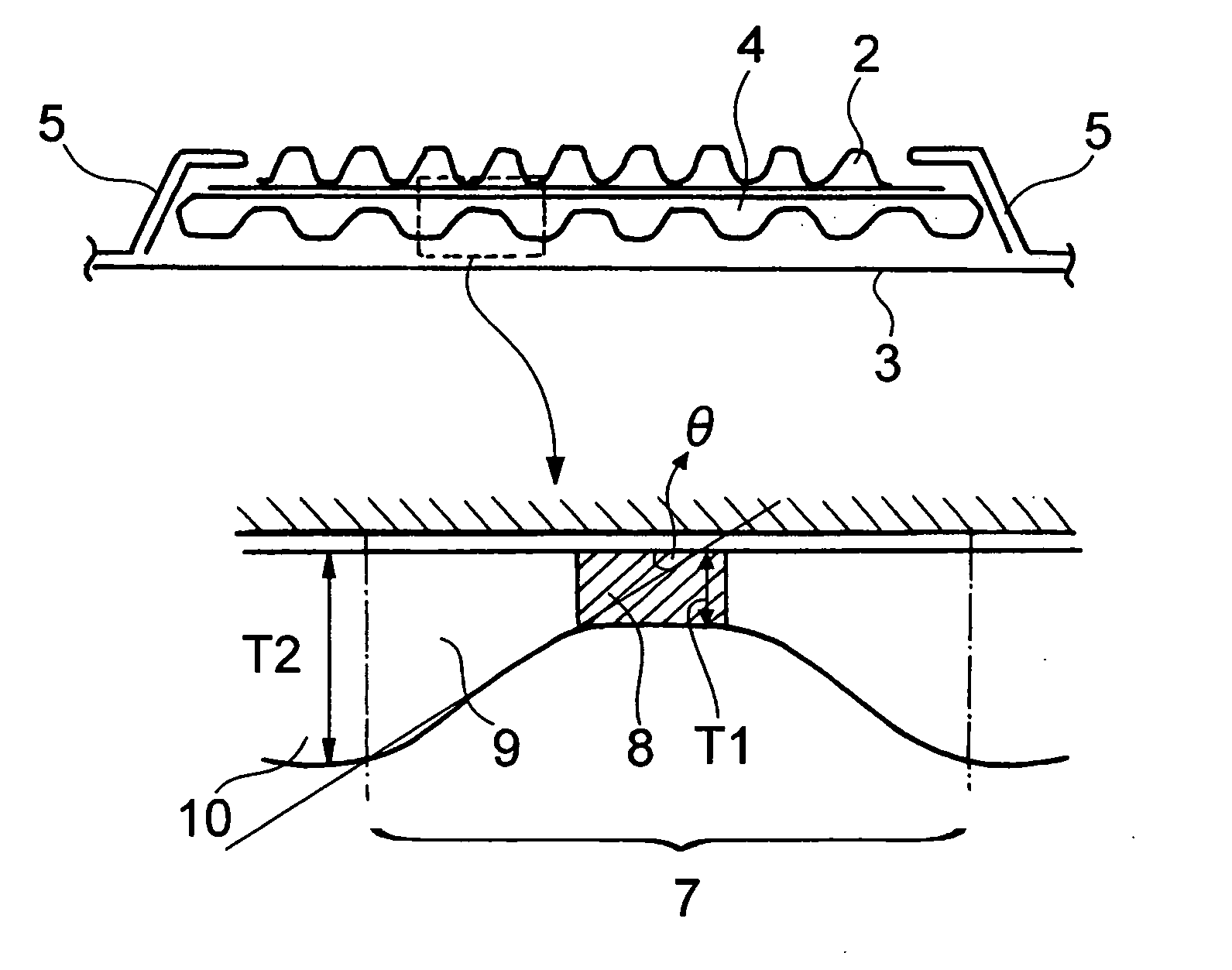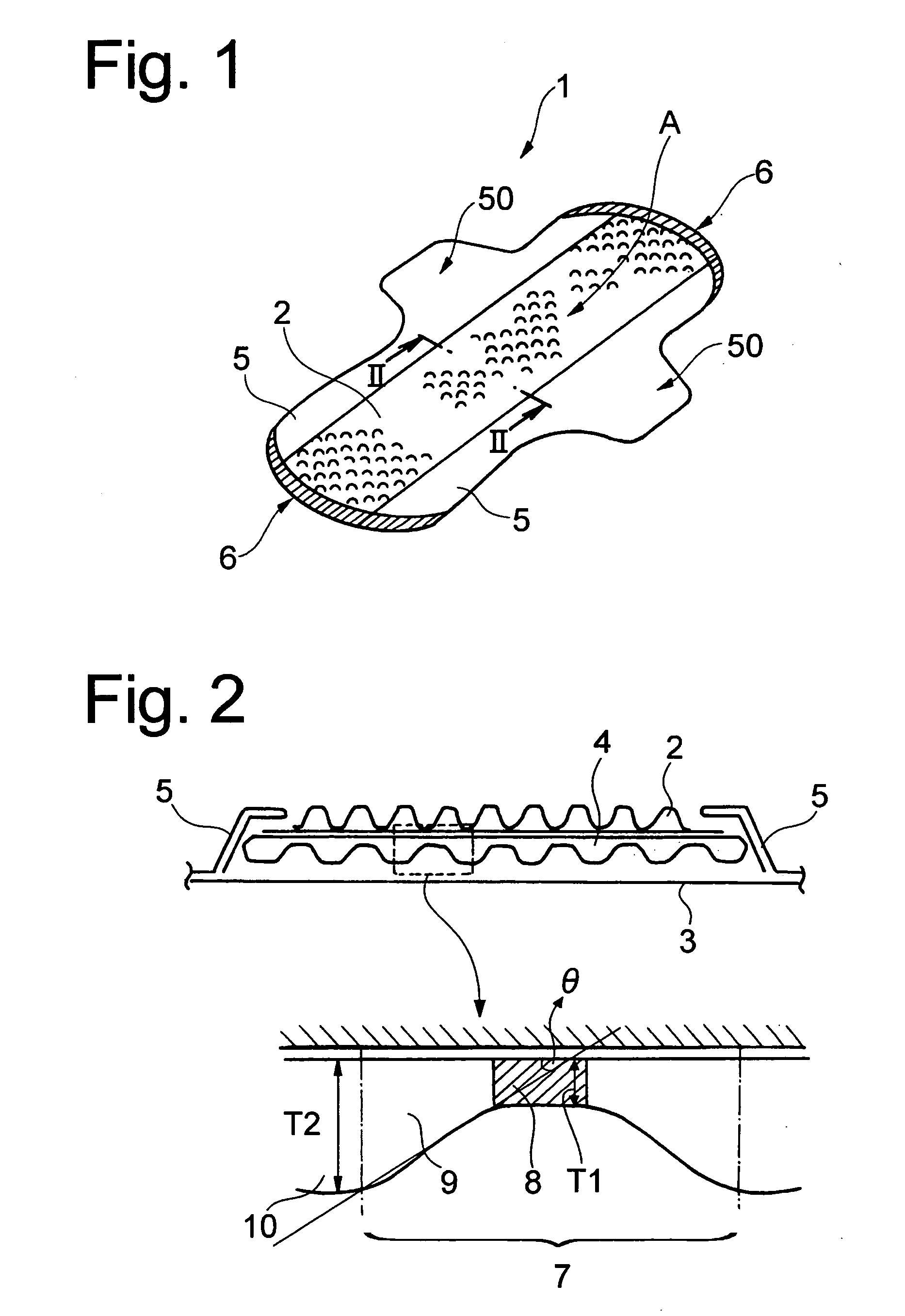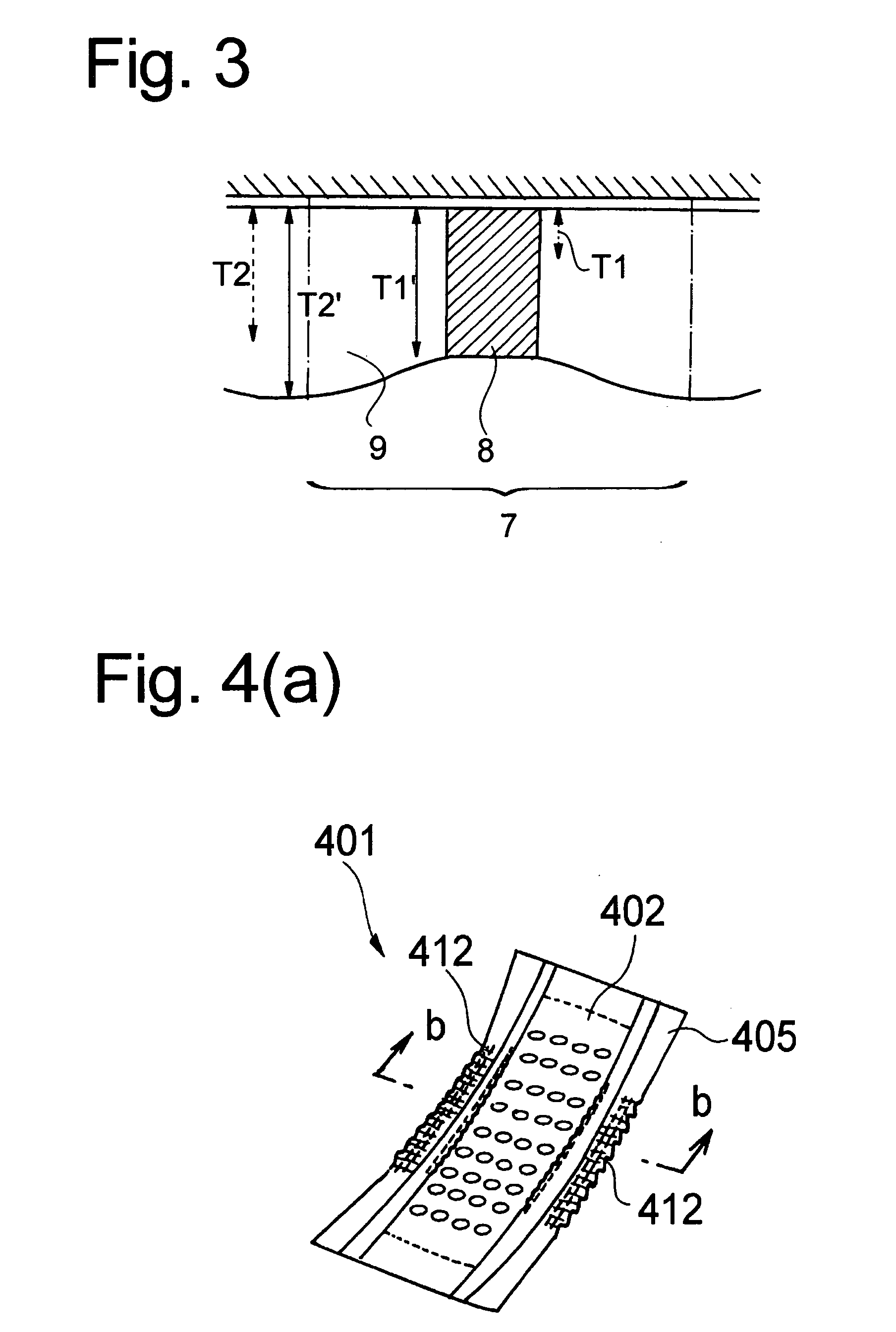Absorbent article
- Summary
- Abstract
- Description
- Claims
- Application Information
AI Technical Summary
Benefits of technology
Problems solved by technology
Method used
Image
Examples
first embodiment
[0015]FIGS. 1 and 2 illustrate a sanitary napkin 1 according to the first embodiment of the invention. As shown, the sanitary napkin 1 is substantially longer than is wide and has a topsheet 2, a backsheet 3, and an absorbent member 4 interposed between the two sheets. The napkin 1 additionally has a pair of side sheets 5 on both longer sides thereof on the skin facing side thereof. The side sheets 5 and the backsheet 3 extend outward from the long side edges of the absorbent member 4 and joined together at their extensions to form a pair of wings 50. The topsheet 2 and the backsheet 3 extend outward from the short side edges of the absorbent member 4 and joined together at their extensions to form end seals 6.
[0016] The topsheet 2 is permeable to liquid. Perforated or non-perforated nonwoven fabric or perforated film is a preferred topsheet 2. The nonwoven fabric can be of single or conjugate fibers of synthetic resins, such as polyolefins, e.g., polyethylene and polypropylene, po...
second embodiment
[0034] FIGS. 4(a), 4(b), and 4(c) represent a disposable diaper 401 as a second embodiment of the absorbent article according to the present invention. The disposable diaper 401 has a topsheet 402, a backsheet 403, and an absorbent member 404. The topsheet 402 is a perforated nonwoven fabric. The perforated nonwoven fabric is obtained by, for example, converting polyethylene sheath-polypropylene core conjugate fiber into bulky nonwoven fabric by through-air processing and passing the nonwoven fabric between a perforating pin roll heated close to the melting point of polyethylene and a backup roll. The area where a pin has pierced through forms a rib of a perforation. The perforating pin roll is applied to the skin facing side of the nonwoven fabric. The backsheet 403 is an SMS nonwoven fabric / moisture permeable film laminate which is obtained by stretching a polyethylene film loaded with an inorganic filler to prepare a moisture permeable film, spraying a hot-melt adhesive to the fi...
third embodiment
[0039] A third embodiment of the present invention provides a sanitary napkin having the same basic structure as the first embodiment, being composed of a topsheet, a backsheet, a pair of side sheets, and an absorbent member. The topsheet is, for example, a perforated polyethylene film. The backsheet is, for example, a polyethylene film embossed in a dot pattern. The side sheet is, for example, an SMS nonwoven fabric with one of the long side portions thereof folded back.
[0040]FIG. 5 shows the absorbent member 504 used in the third embodiment. The absorbent member 504 is composed of an upper layer 514 and a lower layer 524. The upper layer 514 exists over the entire area of the absorbent member 504, while the lower layer 524 is disposed under the upper layer 514 (i.e., farther from the topsheet than the upper layer 514) only in the region corresponding to the target zone where a body fluid discharge will be located. The upper layer 514 and the lower layer 524 are each heat-embossed...
PUM
 Login to View More
Login to View More Abstract
Description
Claims
Application Information
 Login to View More
Login to View More - R&D
- Intellectual Property
- Life Sciences
- Materials
- Tech Scout
- Unparalleled Data Quality
- Higher Quality Content
- 60% Fewer Hallucinations
Browse by: Latest US Patents, China's latest patents, Technical Efficacy Thesaurus, Application Domain, Technology Topic, Popular Technical Reports.
© 2025 PatSnap. All rights reserved.Legal|Privacy policy|Modern Slavery Act Transparency Statement|Sitemap|About US| Contact US: help@patsnap.com



